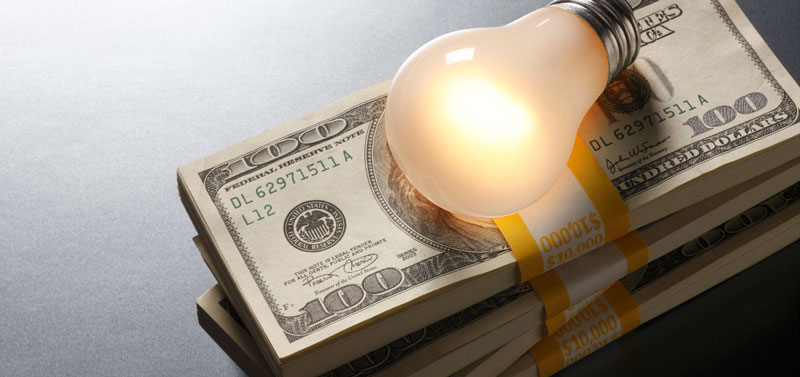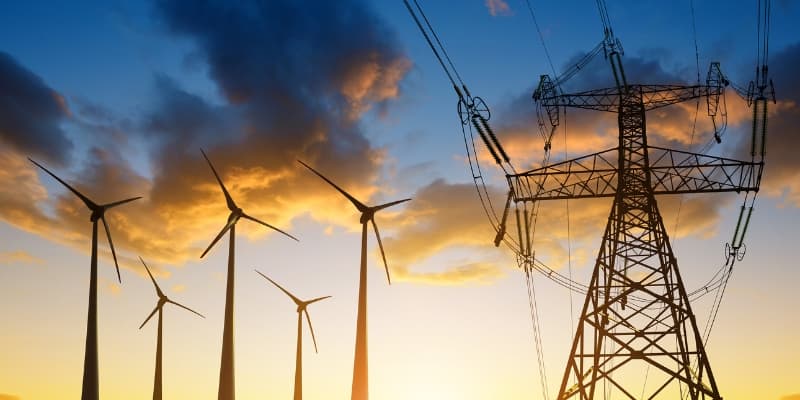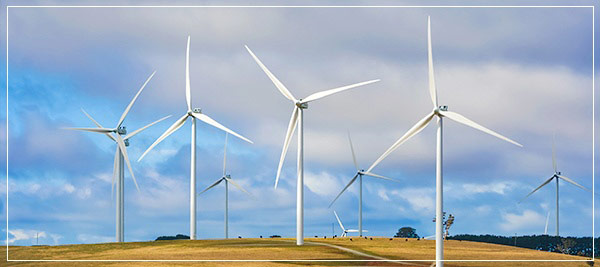Many electric utilities are charging higher rates when there’s more demand (“peak pricing”). For instance, you may pay more for energy from 1:00 pm to 7:00 pm — exactly when you’re using energy-intensive air conditioning or industrial/commercial machines.
Your goal is to pay the lowest possible price for electricity.
In this article, you’ll discover how peak shaving can help, including:
1. How to buy energy at a discount, instead of paying the maximum price;
2. What we can learn from Texas and California’s electricity price hikes;
3. Why energy companies use time–of–use rates;
4. Basics of peak shaving for profit and reliability; and
5. What to expect when you’re considering peak shaving.
The Problem: Peak pricing can vacuum out your wallet. Just ask Texans:
In February 2021, extreme peak pricing hit Texas during winter power outages. News station KHOU11 reported that some Texans with variable-rate plans saw their electric prices skyrocket from $0.03–$0.08 per kilowatt-hour (kWh) to $9/kWh.
Texas’s grid breakdown was a nightmare scenario for customers on a variable rate plan. But Texas isn’t the only state with different pricing tiers for electricity based on demand or time of day.
Called Time-of-Use (TOU) pricing, the practice first entered widespread use in California, which leads the nation in energy policy. Across the country and the world, major utilities are following suit.
Why do energy companies charge a peak rate?
There are many reasons, but primarily, it’s supply and demand.
See, electrical companies have a fleet of power plants to supply the baseload – the minimum amount of electricity needed.
But many businesses and residences need more power at the same time: during business hours and on summer afternoons when air conditioning loads are highest.
Extra electricity during peak times comes from backup power plants called peaking plants, and they’re much more expensive to run.
Peaking plants are only used for a few months a year — but electric companies pay to have them maintained and ready for operation 24/7. It’s like hiring full year-round staff for a seasonal hotel. Worse, peaking plants are typically less efficient. That means that every kWh of power costs more to produce.
It’s no wonder power companies offer rebates for energy-efficient appliances, insulation, and other energy conservation; they don't want to fire up costly peaking plants, and they definitely don’t want to build more of them.
And you probably don’t want to pay extra money for electricity from them.
Here’s how savvy businesses and homeowners avoid peak demand prices (the equipment does the work):
-
Store cheaper (non-peak) electricity in a home battery or building battery.
-
Use battery power when grid power is expensive (peak demand).
-
Recharge batteries when kWh prices are lower (off-peak hours).
This way, you reduce your electric bill without disrupting or changing your everyday operations.
Peak shaving with batteries doesn’t just save money; it also improves power reliability.
A peak shaving system gives you battery backup in case of a power outage. Depending on the capacity of your home or building battery, you’ll be able to keep the lights on for several hours or longer. Businesses have long known the importance of uptime. And as more 9-to-5 employees work from home, they’re also discovering the importance of reliable power.
Of course, peak shaving isn’t for everyone.
If your electricity is flat rate (same price all day), then buying peak shaving equipment will actually cost you money. If you pay a peak rate, you’ll want to review the numbers with an expert to be sure it’s right for your business or home.
What equipment do you need to peak shave?
You probably already have a lot of the equipment you’ll need to peak shave. If you’re a homeowner or have a business, you have electrical wiring throughout your building. You’re connected to the grid. And you have a breaker box(es).
So you’ll only need a few components – batteries, a small subpanel to connect them, and perhaps an inverter.
You don’t need to invest in solar panels to cut your electric bill. Sometimes, the best bang for your buck may be grid-tied battery backup – if your site isn’t well-suited to solar production.
A battery-only peak shaving system is easy, simple, and affordable for professionals to install. Setup is much simpler than solar+storage. Why?
-
There are fewer, less expensive components (no solar panels, for instance)
-
The job requires fewer permits and fewer installation hours
-
You can size batteries to power your building for hours, rather than days.
Of course, there’s no perfect battery — only the right one for your system, operating conditions, risk tolerance, habits, and budget.
For a crash course in battery technologies, click here to see North American Clean Energy’s “Find the Battery You Need.”
And if sustainability is important to you, find out whether your batteries are recyclable.
You can also peak shave with solar+storage for maximum benefits. You’ll have additional flexibility and redundancy, long-term energy savings, and reduced emissions. And because your solar panels will store energy in your home or business battery, you won’t need grid power during peak demand rates.
A solar installer or green builder can help walk you through solar+storage. Be sure your installer or system designer is experienced, and compare quotes before signing anything. If you’re considering solar and aren’t ready to talk to an installer yet, consider reading Install Your Own Solar Panels by Joseph Burdick and Philip Schmidt and The Homeowner’s Guide to Renewable Energy by Dan Chiras.
Depending on the type of peak shaving system you choose, you may even be able to sell batteries’ energy back to the grid.
Beware: Many appliances – particularly with compressors, such as refrigerators, air conditioners, and other machinery – use far more power during startup. If you want to run them, you’ll need a large surge capacity (the ability to handle higher electrical demand for a short time). Be sure your installer sizes your batteries accordingly. And if you select lithium-ion batteries, plan to either load shed (turn off some appliances or equipment so you can start up other devices) or size the battery bank much larger.
What’s peak shaving like, day-to-day?
Peak shaving is like heating or cooling your home. You don’t do anything day-to-day, and it automatically works in the background.
And like HVAC, maintenance is minimal. Plan to invest a few minutes a month checking up on your batteries. You’ll need to do this whether you choose flooded lead-acid, sealed AGM, lithium-ion, or another battery type. And thankfully, it’s easy.
What to expect when you’re looking into peak shaving:
First, an installer or battery expert will talk with you about your electrical needs. They’ll determine how much power you use during peak hours. You don’t want a battery system that runs out of energy midway through the afternoon; but you probably don’t want several days’ power storage just for peak shaving, either.
They may also recommend an energy audit of your building’s envelope (leaks, insulation, etc.) and mechanical system. Energy audits typically offer a high ROI because they show you where you’re losing money. For instance, leaking conditioned air or operating a power-hungry appliance. Armed with their advice, you can slash your energy consumption and reduce how much battery storage you need, all at the same time.
Next, the installer or battery expert will walk you through their calculations. You’ll see whether peak shaving makes sense for you – and how much you could save.
From there, you can have your peak shaving system installed quickly and start paying less for electricity.
To find a recommended installer in your area, just click here and we’ll connect you.










